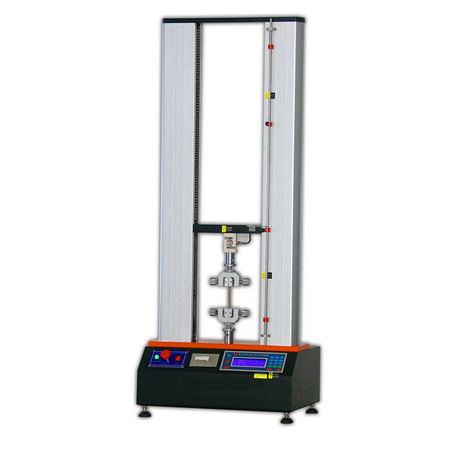- Qinsun Instruments Co., Ltd.
- Tell:+86-21-6780 0179
- Phone:+86-17740808215
- Address:No. 2578 Minhang District Gu Dai Road, Shanghai
- Contact:Mr. Li
- QQ:846490659
The selection principles of mechanical presses

The selection principles of mechanical presses
The selection of the type of mechanical press is based on the process properties of stamping, the size of the production batch, the geometric dimensions and accuracy requirements of the stamped parts, etc. The general principles for selecting the type of mechanical press are summarized as follows:
(1) In the production of small and medium-sized stamping parts, open mechanical presses are mainly used. The single column mechanical press has convenient operating conditions, is easy to install mechanized auxiliary devices, and is low-cost; Open mechanical presses have the advantages of feeding and discharging materials in both left and right directions. However, these types of mechanical presses have poor stiffness, and under the action of stamping deformation force, the deformation of the bed can damage the distribution of die gaps, reduce the life of the mold or the surface quality of the punched parts.
Closed mechanical presses are commonly used in the production of large and medium-sized stamping parts. Among them, there are general-purpose presses, as well as specialized extrusion presses and precision presses with small countertops and high stiffness. In the production of large-scale deep drawing parts, a double action press can be selected, and the mold structure used is simple and easy to adjust.
(2) In mass production or large-scale production of complex shaped parts, high-speed presses or multi station automatic presses should be selected; In small-scale production, especially in the bending and forming production of large thick plate stamping parts, high-speed presses or friction presses are often used.
Hydraulic presses do not have a fixed stroke and will not be overloaded due to changes in sheet thickness. When a large force stroke is required, hydraulic presses have obvious advantages compared to mechanical presses. However, the production efficiency of hydraulic presses is low, and the dimensional accuracy of stamped parts is sometimes unstable due to operational factors. Friction presses have a simple structure, low cost, and are less prone to overload damage. They are commonly used to complete stamping work such as bending. The stroke of a friction press is not fixed, so it is not affected by fluctuations in sheet thickness during the leveling or shaping of stamped parts, and can maintain relatively stable shaping accuracy. However, the friction press has fewer strokes, low production efficiency, and inconvenient operation.
(3) Full attention must be paid to the stiffness and accuracy of mechanical presses. The stiffness of a mechanical press consists of three parts: bed stiffness, transmission stiffness, and guiding stiffness. Only when the stiffness of the press is sufficient can its static accuracy (measured under no-load conditions) be maintained under load conditions. Otherwise, its static accuracy loses its significance. The stiffness of a press directly affects the lifespan of the mold and the quality of the punched parts.
Mechanical presses with high precision and high stiffness should be selected as much as possible for punching thin plate parts; Mechanical presses used for correcting bending, leveling, and shaping should have greater stiffness to achieve higher dimensional accuracy of stamped parts.





